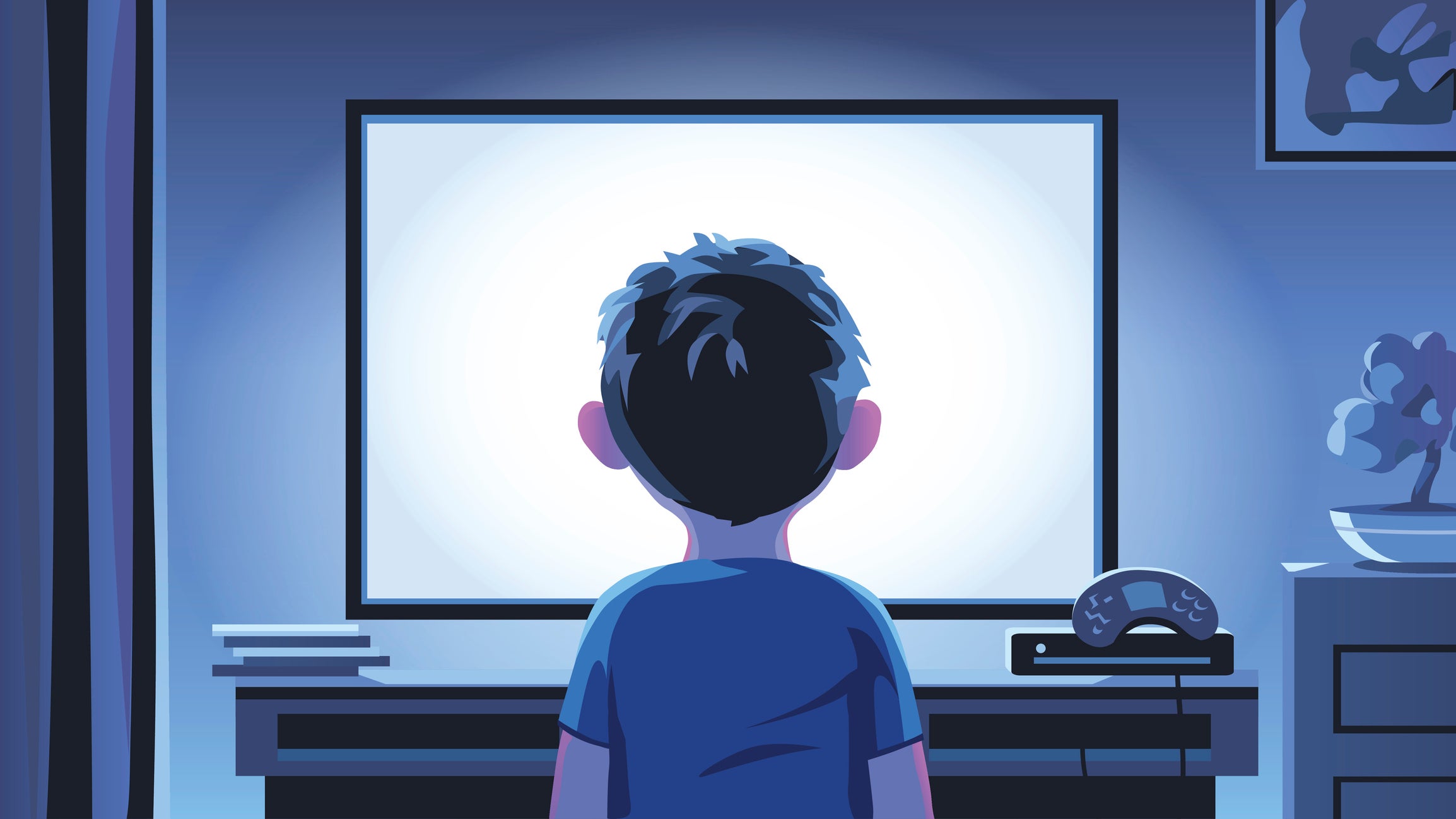‘My son has turned into a hermit’: Is coronavirus creating a generation of agoraphobes?
At first it didn’t seem so bad, we’d have to stay indoors more and see other people less but it would only be temporary, but eventually some children stopped wanting to go out altogether, writes Alex Williams

Your support helps us to tell the story
From reproductive rights to climate change to Big Tech, The Independent is on the ground when the story is developing. Whether it's investigating the financials of Elon Musk's pro-Trump PAC or producing our latest documentary, 'The A Word', which shines a light on the American women fighting for reproductive rights, we know how important it is to parse out the facts from the messaging.
At such a critical moment in US history, we need reporters on the ground. Your donation allows us to keep sending journalists to speak to both sides of the story.
The Independent is trusted by Americans across the entire political spectrum. And unlike many other quality news outlets, we choose not to lock Americans out of our reporting and analysis with paywalls. We believe quality journalism should be available to everyone, paid for by those who can afford it.
Your support makes all the difference.The family, she told him, would not be travelling to his grandfather’s house to celebrate the Iranian new year, as they usually did. He might become infected but not know. He wouldn’t be able to go to school or see friends for, well, who knows how long. But he could still enjoy bike rides around the neighbourhood or swimming in their back garden pool.
For the first month or two, Roman appeared fine with life in the bubble, as he hunched over the dining room table for hours writing screenplays for a stop-motion film starring his Star Wars figures. As the months dragged on, however, he seemed a little too fine with life inside the bubble.
“Now,” Kian, 37, says, “he doesn’t want to leave the four walls of this house. He doesn’t even want to go to the backyard. If I want him to go in the pool, I have to beg.
“My son,” she adds, “who was a pretty introverted kid pre-Covid, has turned into a hermit.”
After more than a half-year of virtual house arrest, some adults crave nothing more than escape into the world beyond four walls. For some younger children, however, the topic is a little more complicated.
Faced with a world of ominous warnings, masks and playgrounds barricaded by yellow tape, some crave the security and familiarity of home – so desperately, it seems, that parents find themselves resorting to pleas, threats or bribes to drag them out of the house, with highly mixed results.
And parents hoping for a return to normal with the new school year may be disappointed, as many schools nationwide have adopted strict and potentially unsettling social-distancing measures, complete with masks – that is, when schools open at all. (This month, for example, the New York mayor, Bill de Blasio, announced that he would close all schools – public and private – in nine of the city’s Zip codes that were experiencing high positive test rates).
The result is yet another worry in a year of worries for parents. As if the ever-present tussles over screen addiction and remote schooling were not enough, now some wonder if they are doomed to raise Generation Agoraphobia.
“This phenomenon is incredibly widespread,” says Nina Kaiser, a child psychologist in San Francisco whose team of nine therapists specialises in anxiety-related issues. “We’ve been hearing these concerns from families in our own practice, and done a ton of webinars with paediatric practices, and in every one there are questions about kids who are reluctant to leave the house and how to coax and cajole them.”
And who can blame them? “For months, our behaviour has sent this message that the safest place to be was at home,” says Kaiser, who adds that she is dealing with the same issues with her 4-year-old son. “So it’s hardly shocking that we’re seeing significant pushback from kids about leaving the safe zone.”
Even adults have a hard time calibrating the relative safety of any trip into public. How can we expect a 7-year-old to know?
Gradually, but emphatically, parents should make every effort to get their children out of the house
“For younger kids, it’s hard to do a risk analysis,” says Golda S Ginsburg, a professor of psychiatry at the University of Connecticut. “They’re just not cognitively mature enough. And children who struggle with anxiety can overestimate the risk and underestimate their own coping skills.”
“For some kids afraid of leaving the house,” she added, “they are terrified there is nothing that they can do to be safe or reduce their anxiety – so they stay indoors.”
An ever-changing environment
Some children develop their aversion slowly. For others, the change is abrupt.
Marki Stewart, 39, a lawyer in Phoenix, says there was no question when her 8-year-old daughter transformed from a child that eagerly headed for Ninja exercise classes and the toy aisle at Target to a homebody in the extreme.
“As soon as Covid hit and school shut down,” Stewart says, “it was like a switch flipped. She refuses to leave the house.”
At first, that stubbornness was actually convenient. “We couldn’t go anywhere or do anything because of social-distancing,” Stewart says, “so it was helpful that she didn’t want to go anywhere or do anything.”
However, any attempt that she and her husband make to get the child out for daily walks for exercise devolve into 30 minutes of fussing, cajoling and bribery, or outright refusals, Stewart says.
The two times they managed to get her out in public since the quarantine and walk her to a nearby bookstore, which they assured her was empty and safe, “she whined constantly that she wanted to go home,” Stewart says. “The last time, she grabbed the first book she saw and said, ‘OK, can we go now?’”
The mask itself can be a reminder of lurking danger beyond the front door.
“My daughter is afraid of anyone in a mask because it reminds her of doctors and hospitals,” says Elizabeth Copland, 34, an academic counsellor at the University of Washington who lives near Seattle.
While Elodie, who is 2, usually clings to her mother “like a barnacle” at the thought of leaving the house, Copland recently managed to get her outside for a walk. When they ran into a friend, “my daughter didn’t recognise her in her mask and immediately burst into tears”.
Is this actually agoraphobia?
Much of this resistance among children to leave the house does not, in fact, meet the clinical definition of agoraphobia, says Mary Alvord, a psychologist in Chevy Chase, Maryland, who works with children dealing with anxiety-related issues.
According to the fifth edition of the Diagnostic and Statistical Manual of Mental Disorders, agoraphobia is an anxiety disorder that involves a fear of being in places where escape might be difficult – a crowded train station, say, or a subway train – which can lead to feelings of helplessness and, at times, panic attacks.
“Agoraphobia is really the fear of leaving the house alone, or of being in crowded places, but there has to be an intense fear,” Alvord says. (It is more common in teenagers than younger children, she adds.)
While phobias can develop if a child falls into a pattern of resistance and avoidance, specific phobias are often rooted in a single negative episode – a bee sting that might make you phobic about being outside, for example.
But, Alvord says, “there are some kids who just don’t want to leave home because it is so comfortable. For them, it’s the path of least resistance more than fear: ‘No, I’d rather stay home, text with my friends and play video games with them over a server.’”
The comforts of home
After four months of near-confinement in a two-bedroom apartment in Brooklyn, New York, Shruti Kapoor, who runs a nonprofit organisation for women in India, noticed that her 4-year-old daughter, Diya, lost any desire to leave the house, seeming to prefer time with her parents.
“Whenever I asked her, she said she was never afraid, she was just comfortable at home,” Kapoor, 42, says. “But there was a very clear point where she was itching her body, or scratching her face, like she was nervous or anxious. I think it was about being cooped up, and a lack of engagement.”
That was also the experience of Adam Craniotes, 48, a magazine editor in New York.
After a temporary stay in Connecticut last spring, where his children Paul, 13, and Lola, 11, happily ventured out on hikes in the woods or crabbing at the beach, they returned in June to New York City, where his children were confronted with new and alarming urban protocols: only their mother, Liz Chen, wearing disposable rubber gloves, was permitted to push elevator buttons; visits to their grandmother uptown were hug-free; and everyone had to wear masks, even indoors.
“It was like pulling teeth to get Paul and Lola to leave our apartment for, well, anything,” Craniotes, 48, says. “They were only too happy to binge-watch Netflix and Disney+ and FaceTime with their friends, or Paul’s case, play online video games.”
No wonder. In games like Roblox, which has seen a surge of interest among tweens and pretweens during the pandemic, children can explore the great cities, throw raucous parties, and start garage bands in a colorful world where everything seems free (except, of course, when those eye-popping in-app purchases show up on their parents’ credit card statements).
Compare that to the world of shuttered libraries, movie theaters and gyms outside their bedroom windows.
Before relocating, perhaps temporarily, to Westchester County in August, Jenna Yasgur, who owns a wedding calligraphy business, and her husband, Jon Yasgur, an advertising creative director, found their daughters Clementine, 9, and Georgette, 7, showing little interest in leaving their “terrarium of an apartment on the 24th floor looking out at the quiet bleak streets of Brooklyn,” Jenna Yasgur wrote in an email.
Where would they go? Their favourite haunts like the Natural History Museum and Colour Factory, a Technicolour art space, were closed, after all.
“They would just want to pour themselves into the cool obbys of Roblox,” Jenna Yasgur says of the gaming site and app with virtual worlds filled with Lego-like characters. “It was their alternate reality where they could be at amusement parks, create lemonade stands, adopt pets, trade things with friends, actually dress up their avatar, because no one in the house was even getting dressed these days.”
After all, an anxiety disorder may, in theory, develop if children fall too deeply into a pattern of avoidance of the outdoors
What can parents do to help?
Bribery can seem like the only option to some parents who have a hard time luring their children outdoors.
For Maggie Van Ness, a senior project manager at a running shoe company in Seattle, any attempt to get her daughters, ages 10 and 6, some fresh air (such as it is, with nearby wildfires), turns into a collective-bargaining exercise.
“For them, it’s ‘What’s the incentive, what’s the reward?’” Van Ness, 46, says. “For my younger daughter, ‘snack’ is the magic word: can we go to Starbucks to get a cake pop? But we’ve tapped out on all the tricks. Now it’s more like, ‘If we had that puppy, sure, we could go out for a walk.’ ”
The nudge, push or the bribe may be worth it if parents want to break their children’s homebody habit.
After all, an anxiety disorder may, in theory, develop if children fall too deeply into a pattern of avoidance of the outdoors, Ginsburg says. “It’s important to identify the cause of the anxiety. For some kids, the fear is separation – something might happen to me or my parents if I leave the house.”
Whatever the specific fear, she says, “the core treatment ingredient of anxiety disorders is really to do the opposite of what they’re avoiding.”
Gradually, but emphatically, parents should make every effort to get their children out of the house, to travel “over and over and over, and farther and farther and farther”, Ginsburg says. “‘Let’s walk to the end of the block. Now let’s walk around the block.’ And after they do face their fear, parents can talk it through: ‘Did you have fun? What was really positive about going out?’ and build on the successful experience.”
Several parents interviewed wondered if this avoidance of the outdoors might have lasting mental harm.
“Kids are incredibly resilient,” Kaiser says. “A lot of the long-term impacts depend on how we message that transition as we start to go back to normal. Try not to be reactive, and send the message that this is a bigger deal than it needs to be. Steer away from validating kids’ desire to stay home.”
And for the present, letting them indulge in a little fantasy exploration is not a bad start.
When Symon Hajjar, who runs a children’s music programme in Tulsa, Oklahoma, tried to coax his two sons, Isaac, 5, and Ezra, 3, to buy some plants for the garden at a local nursery a few months ago, he was encouraged to learn that they had already planned a trip of their own to Oklahoma City – without leaving the family property, that is.
“My wife and I looked out into the backyard and the kids had arranged all the benches around the fireplace into airplane seats, packed their suitcases full of cheese sticks and apple sauce packs, and surrounded themselves with all their stuffed animals as passengers,” Hajjar, 39, says. “They must have been on that flight for an hour.”
© The New York Times




Join our commenting forum
Join thought-provoking conversations, follow other Independent readers and see their replies
Comments